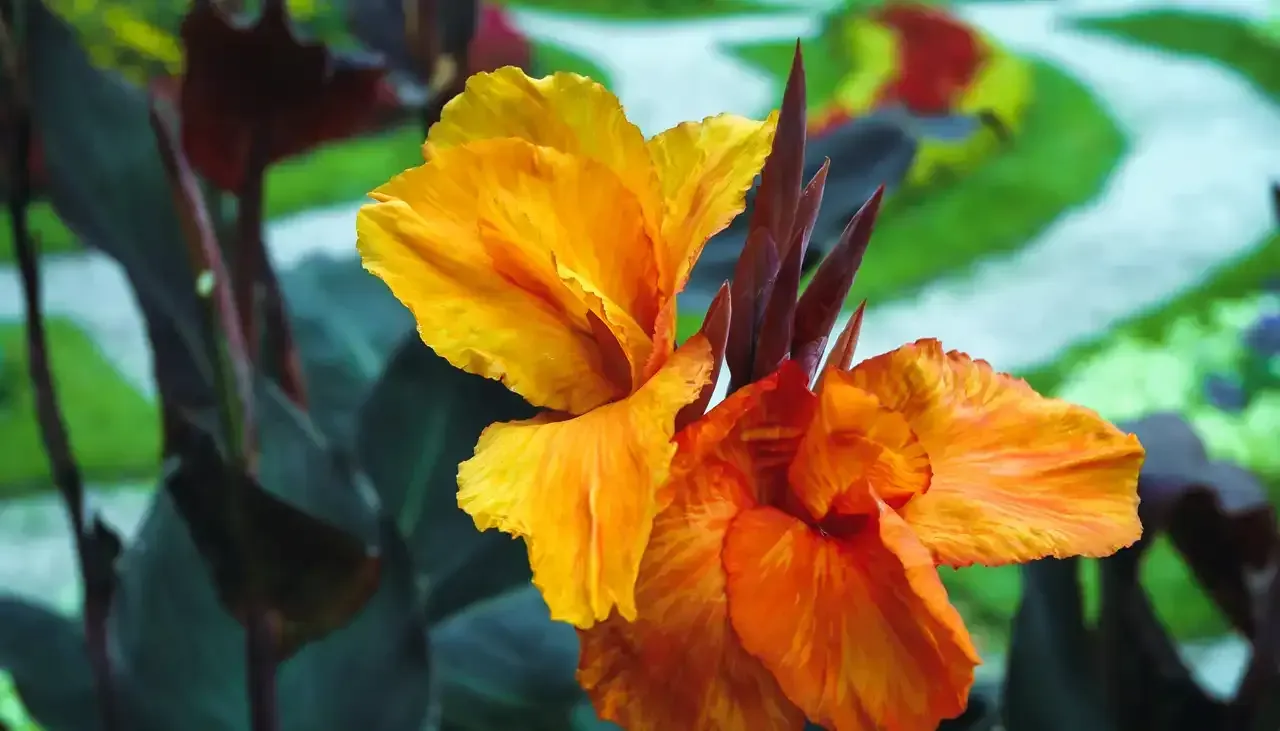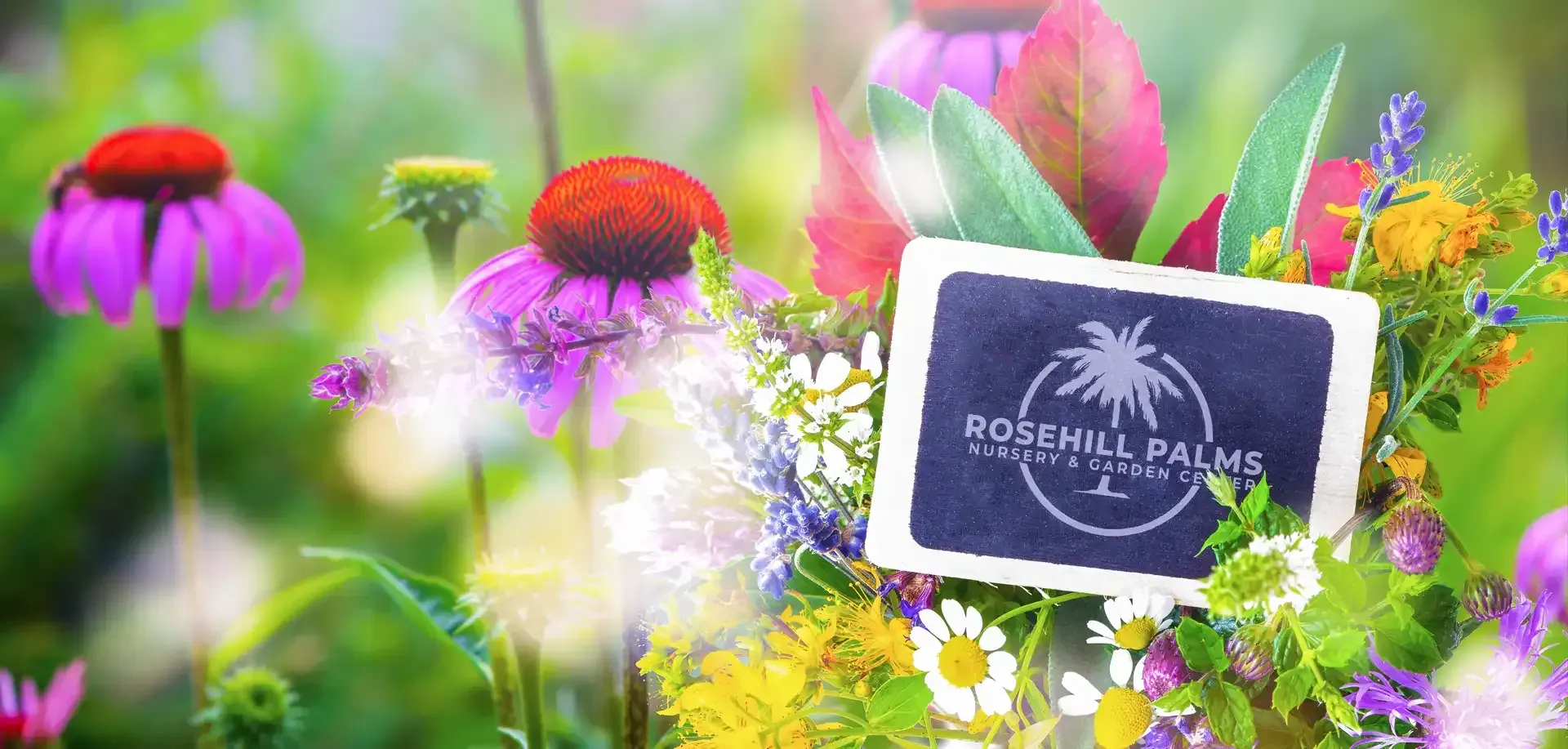How to Grow and Care for Blue Lily of the Nile
How to Grow and Care for Blue Lily of the Nile
Our top pick this season at Rosehill Palms is the Blue Lily of the Nile. These plants bring an elegant touch to gardens with their striking, spherical clusters of blue or purple flowers. This blog will provide a comprehensive understanding of the Blue Lily of the Nile, so you can enjoy them all summer long.
What is the Blue Lily of the Nile
The Blue Lily of the Nile, also known by its botanical name Agapanthus, is a hardy, herbaceous perennial native to Southern Africa. Known for its long stalks topped with clusters of star-shaped blue or purple flowers, it is a favorite among gardeners who want to add vibrant, eye-catching blooms to their outdoor spaces.
Blue Lily of the Nile thrives in USDA hardiness zones 7-11, making it well-suited for warm climate with mild winters. These plants are heat-tolerant and drought-resistance once established, making them particularly ideal for Texas landscapes. They are also low-maintenance and long-blooming, with flowers appearing in late spring through summer.
Choosing the Right Variety of Blue Lily of the Nile
When selecting a variety, it’s important to consider the specific growing conditions and aesthetic preferences for your garden. Popular varieties include:
Choosing the Right Variety of Bougainvillea
-
Agapanthus AfricanusItem Link
Known for its deep blue flowers, this variety is compact and perfect for borders or containers.
-
Agapanthus "Blue Storm"Item Link
A drought-tolerant variety with sky-blue blooms, ideal for water-wise gardens.
-
Agapanthus "Albus"Item Link
A white-flowering variety that offers a softer, more subtle addition to the landscape.
-
Agapanthus "Peter Pan"Item Link
A dwarf variety, great for smaller garden spaces or container gardening.
How to Choose a Location for Your Blue Lily of the Nile
Selecting the right location is key for your Blue Lily of the Nile to thrive. This plants grow best in sunny environments and need at least six hours of direct sunlight per day to produce their vibrant blooms. However, in hotter climates, they may need partial shade to prevent excessive wilting.
Plant them in well-draining soil to avoid waterlogged roots. While they are adaptable to different soil types, slightly sandy or loamy soils are ideal for these plants. They prefer slightly acidic soil in the range of 6.0 to 7.0 pH.
How to Plant Blue Lily of the Nile
Proper planting techniques are essential for established a healthy Agapanthus. Here’s a step-by-step guide:
- Choose the Right Time: Plant Agapanthus in the spring after the last frost, when the soil has warmed.
- Prepare the Soil: Amend the soil with organic matter to improve drainage and fertility if necessary. If planting in containers, ensure the pot has good drainage and is at least 12 inches wide.
- Planting Depth: Dig a hole twice as wide and just as deep as the root ball.
- Position the Plant: Place the plant in the hole ensuring the crown is level with the soil surface to prevent water-logging.
- Backfill and Water: Backfill the hole with soil, gently firming it around the base. Water thoroughly the settle the soil and remove air pockets.
- Mulch: Apply a layer of mulch around the plant to retain moisture and regulate soil temperature.
Blue Lily of the Nile Care Instructions: Watering and Feeding
While Blue Lily of the Nile is drought-tolerant once established, young plants will need consistent moisture to get established. Water deeply but infrequently, allowing the soil to dry out between watering. From spring through summer, water regularly to promote vigorous growth and blooming. Reduce watering when the plant enters dormancy in the fall and winter.
To keep your plant well-fed, use a balanced, slow-release fertilizer every six to eight weeks during the growing season.
Pruning and Dividing Blue Lily of the Nile
Pruning and dividing Agapanthus us essential to maintain its health and appearance.
Pruning: Deadhead old blooms to encourage new flower production and keep the plant looking neat. Cut the flower stalks back to the base once blooming has finished.
Dividing: Every 3-4 years, divide overcrowded clumps in early spring or fall to encourage better flowering and rejuvenate the plant. Carefully lift the plant from the ground, divide the root clump into smaller sections, and replant.
Blue Lily of the Nile: Common Pests and Diseases
Snails and Slugs: These pests can chew on the leaves and flowers, especially in damp conditions. Use organic snail bait or traps to control them.
Root Rot: This can occur if the plant is overwatered or grown in poorly draining soil. Ensure proper drainage and avoid watering too frequently.
Fungal Leaf Spot: Occasionally, Agapanthus may develop spots on the leaves due to fungal infections. Remove affected leaves and improve air circulation around the plant.

Rosehill’s Tips and Tricks for Growing Blue Lily of the Nile
Container Growth: If growing Agapanthus in pots, choose a pot large enough to accommodate the plant’s roots, and don’t repot too frequently, as they prefer slightly root-bound conditions.
Support: Some taller varieties may benefit from staking to keep the flower stalks upright, especially in windy areas.
Conclusion
The Blue Lily of the Nile is a stunning addition to any garden, offering long-lasting blooms and relatively easy care. With proper planting, watering, and occasional pruning, you can enjoy vibrant blue flowers year after year. Whether you’re growing them in the ground or in containers, Agapanthus adds a touch of elegance and beauty to any landscape.
Rosehill Palms
18511 FM 2920 Rd, Tomball, TX 77377
Proud member of the
Please feel free to contact us via the form below. We will give you an answer as soon as possible!
Contact Form Blog
We will get back to you as soon as possible.
Please try again later.
Rosehill Palms | Developed by Urdaneta Group WSI | All Rights Reserved 2025
Rosehill Palms | Developed by WSI Houston | All Rights Reserved 2024





